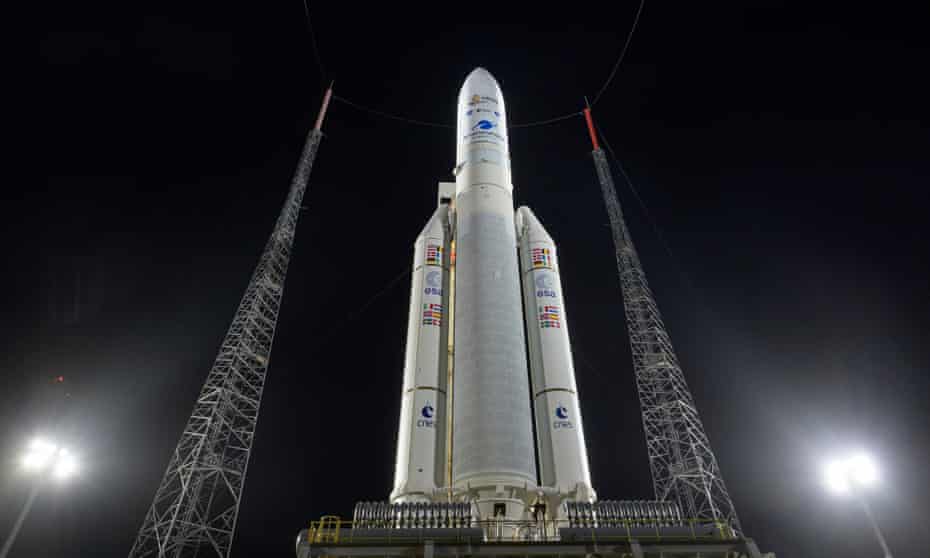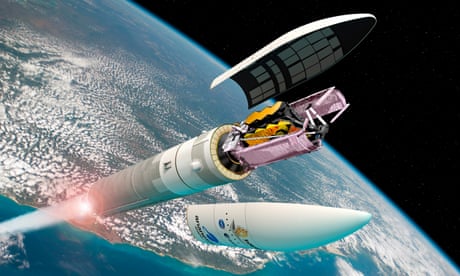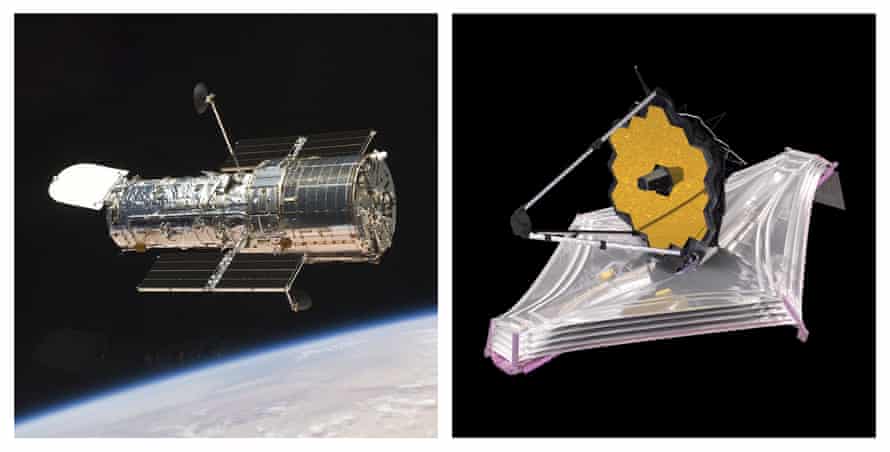Extract from The Guardian
The $13bn telescope, which replaces the Hubble, will allow us ‘to see back to the beginning of time’, astronomers say.

CSIRO’s Canberra Deep Space Communication Complex is expecting to hear from the $13.6bn craft on Christmas night.
Nasa says the James Webb, which replaces the Hubble space telescope, will “gaze into the epoch when the very first stars and galaxies formed, over 13.5bn years ago”.
But before it enters an orbit around the sun, it will check in with Canberra. Glen Nagle, from CSIRO’s Nasa tracking station, said it will be like receiving an email.

“We know where it’ll be in our skies. We will lock on to the signal with our antenna, then we’ll refine the signal,” he said.
“It’ll still be relatively close, not more than a few hundred kilometres away, but it’s going straight out. We’ll track it, follow it, as it accelerates to about 38,000km/h to reach escape velocity.
“It’s sending a set of demands, the digital ones and zeroes and then the space craft sends back the info we’ll have asked for, which in this chase will be its health. Has it deployed its solar panels correctly, is it generating power, are all the systems on board OK?”
The team will also make sure it’s on the right course. Then they hand over to the Spain tracking station, who in turn will pass over to the US tracking station, before Canberra picks it up again about 20 minutes after it has separated from its main rocket.
Then, 1.5m kilometres away from Earth, it will unfold its mirrors, its sunshield, and then astronomers will be able to use what it sees to study the beginning of the universe, as well as planets that could harbour liquid water and other signatures of habitability.
The Hubble space telescope orbiting the Earth (left) and an illustration of the James Webb space telescope, which is 100 times more powerful. Photograph: AP
“The telescope is up to a million times more sensitive to infrared than any ground-based telescope, allowing us to see back to the beginning of time, to the first stars and galaxies after the big bang, and solve some of the greatest mysteries of the universe.”
Dr Benjamin Pope, from the University of Queensland, will work with an international team to enhance images from the telescope.
“We will use hardware and new software to achieve very high resolution and contrast, in order to study the process of planet and star formation,” he said.
After decades of planning, the telescope’s launch was delayed by high winds this week, but is now slated to blast off at 11.20pm AEDT on Saturday.

No comments:
Post a Comment